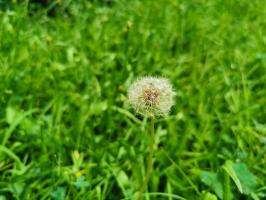Introduction
Watering plants can be a time-consuming and tedious task, especially if you have a large garden or many potted plants. But what if you could automate the process? Automatic plant watering systems are becoming increasingly popular, and for good reason. They save time, money, and ensure your plants get the water they need at the right time. In this article, we will discuss how to water your plants automatically.
What You Will Need
Before setting up an automatic plant watering system, you will need a few things:
A water source
An irrigation system such as a drip irrigation system or sprinkler system
A timer
Valves and tubing
Sensors (optional)
Choosing the Right System
There are many types of automatic plant watering systems available, so it's important to choose the one that's right for you. The two most common types are drip irrigation systems and sprinkler systems.
Drip irrigation systems work by slowly dripping water directly onto the plant's roots, ensuring the soil stays moist. Sprinkler systems, on the other hand, distribute water over a larger area, making them ideal for lawns or gardens with a larger number of plants.
When choosing a system, consider the size of your garden or the number of plants you have, the type of plants you have, and your budget.
Setting Up the System
The first step in setting up an automatic plant watering system is to connect it to a water source. You may need to hire a plumber to install a new faucet or hose connection if you don't already have one.
The next step is to install the irrigation system. If you're using a drip irrigation system, you'll need to lay tubing around your plants and install drip emitters. If you're using a sprinkler system, you'll need to install sprinkler heads or rotors.
Once the irrigation system is installed, connect it to a timer. The timer will turn the water on and off at predetermined intervals, ensuring your plants get the right amount of water.
Optional Sensors
If you want to take your automatic watering system to the next level, you can install sensors that measure soil moisture levels or weather conditions. Soil moisture sensors will detect when the soil is getting too dry and will turn on the watering system automatically. Weather sensors will detect when it's raining and will turn the system off to avoid overwatering.
Maintenance
To ensure your automatic plant watering system continues to work effectively, you'll need to perform some regular maintenance. This includes checking the system for leaks, clearing any clogs, and replacing any damaged tubing or emitters.
You'll also need to adjust the watering schedule based on the season and weather conditions. During hot, dry weather, you may need to water your plants more frequently, while during cooler, wet weather, you may need to water them less.
Conclusion
An automatic plant watering system can save you time, money, and ensure your plants get the water they need. By choosing the right system, setting it up correctly, and performing regular maintenance, you can enjoy a beautiful garden without having to spend hours watering it by hand.

 how many times do yo...
how many times do yo... how many planted tre...
how many planted tre... how many pine trees ...
how many pine trees ... how many pecan trees...
how many pecan trees... how many plants comp...
how many plants comp... how many plants can ...
how many plants can ... how many plants and ...
how many plants and ... how many pepper plan...
how many pepper plan...
































